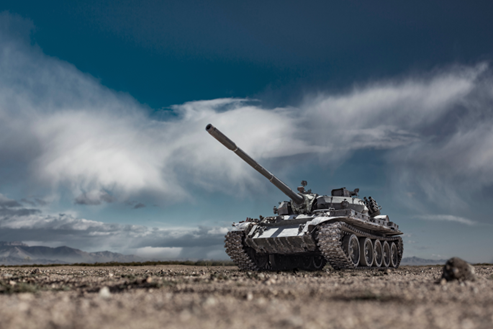A proud veteran of the United States Army, David Shilkitus has always had a great appreciation for military history. Having spent a good amount of time researching military history, David Shilkitus finds the advancements in military tanks extremely interesting. Today, David Shilkitus will provide a look at the evolution of tanks over time. The design of the modern military tank took years and years to develop.
Historians believe humans started leveraging vehicles for warfare around the second century BCE. Utilizing spoked wheel enabled chariot-based warfare tactics provided a clear tactical advantage for soldiers looking to shoot arrows or wield a sword from a safe vantage point. Of course, the dawn of tanks as we now know them really started to take shape for World War I. David Shilkitus notes that tanks were a response to the trench warfare that was taking place. The conditions made trucks and other military vehicles all but useless as they would get stuck in the mud or battered by barbed wire. Only tanks could navigate efficiently across practically any war-torn surface.
David Shilkitus notes that the first World War I tank was the Mark I. The British unveiled this tank in 1916 in France. While these tanks could navigate well through the mud, they did have some mechanical flaws, with the biggest being a propensity to suffer engine failure due to overheating. The soldiers inside of the tank would have to endure brutally hot temperatures, during each ride. England continued to adjust the design and were up to the Mark IV by the time the Battle of Cambrai took place in late 1917. Only France, Germany, and the United States produced tanks in World War I different from the English versions. The world wouldn’t grow aware of tank advancements again until World War II.
World powers were aware of the fact that the French Renault F.T. was the most popular tank in World War I, and every major player wanted to make sure they could improve upon this model. Countries were racing to advance the armament of their tanks as well as the mobility. The tricky part for the designers was the powers that be were also asking for tanks to be heavier, so they would be able to withstand more punishment and hold more guns for fighting other tanks.
Germany was able to have military success during the beginning of Word War II in large part due to the quality of their tanks. The Treaty of Versailles prohibited Germany from creating tanks, but Hitler’s ascension into power brought about a renewed focus on the production of tanks known as Panzers. These tanks could reach a top speed of nearly 30 MPH and featured a very thick armor. Germany used their tanks to overwhelm the forces of the allies who were used to leveraging tanks as a means of support for their solders as opposed to a leading attack weapon.
In addition to fears over the German tanks, the allied forces had to contend with the Soviet Union who was also a major producer of tanks. The two most well-known Soviet Union tank models were the T-34 and the JS, which featured a 76 mm gun and a 122-mm gun.
While the British and the United States forces were behind in tank technology at the start of World War II, they pivoted quickly to offer their fighting forces a chance to not only compete with enemy tanks but outpower them. The first example of this for the British came with the implementation of 95-mm howitzer on their Cromwell tanks. This gun was powerful enough to penetrate the armor of the German panzer. In 1942, the United States introduced the M4 Sherman tank. The M-4 Sherman tank could drive close to 30 MPH and featured 75-mm or 76-mm guns. These tanks were lighter and more agile, which allowed them to gain a competitive advantage on the battlefield. David Shilkitus notes the United States was also able to produce more than 50,000 of these tanks for themselves and their allies, which made a significant different in the war effort.
At the conclusion of World War II, there were only minor developments to American tanks. In fact, the M4 Sherman was utilized in the Korean War. Modern tanks have larger guns, more powerful engines, more armor, and more firepower. Technology has also allowed the military to advance tanks with features such as fire detection, fire suppression, thermal imaging, and even camouflage settings that can help modern tanks stay off of enemy radar. While it is unlikely tanks are ever the focal point of a war again, they still play a pivotal role in establishing the strength of any country’s military.









